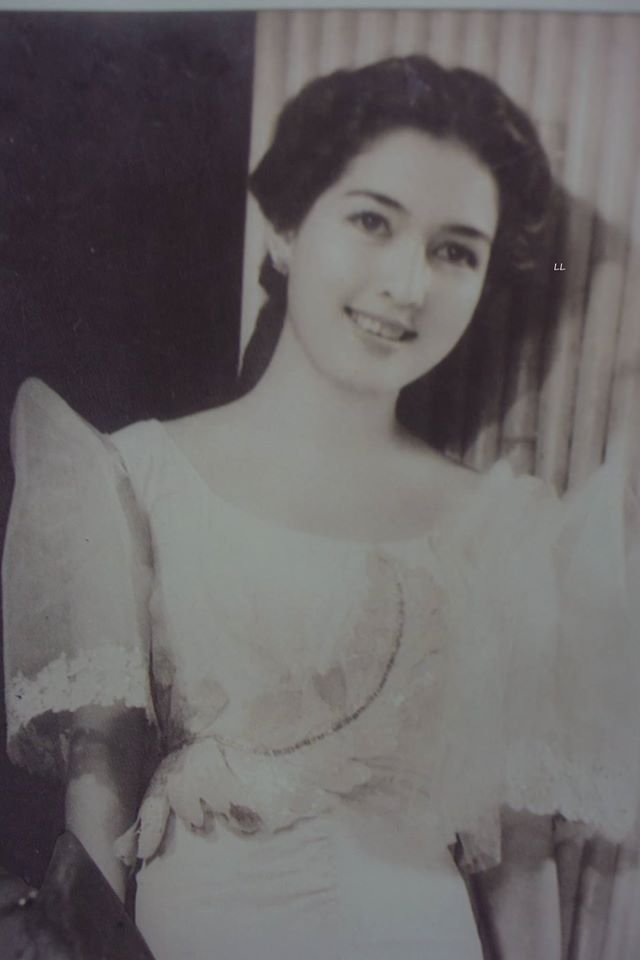Susan Magalona, an Inimitable Southern Belle
/Susan Magalona during her heyday (from the book Philippine Costumes by J. Moreno)
The author Nick Joaquin once commented that the Philippine South (meaning the Visayas) bequeathed great feminine beauty and glittering wealth to the nation. Unlike the American South, it was relatively untouched by a great war. Iloilo, Bacolod, Silay, and Dumaguete still retain their magnificent share of grand historic colonial mansions and churches (witness Peque Gallaga’s film, Ganito Kami Noon, filmed in situ).
Prewar Manila from 1908 to 1939, with its annual pre-Lenten Carnival, witnessed the emergence of splendid beauties from the highest echelons of society (e.g. Pura Villanueva-Kalaw, Pacita de los Reyes-Philips, Conchita Sunico) who were crowned Miss Philippines or Misses Luzon, Visayas, and Mindanao, without the vulgarity of today’s beauty contests. They were simply vetted and chosen on the basis of votes cast by an interested public. Many of them were from the Philippine South, namely, the Visayas. It is no wonder that just before WWII broke out, the most popular film in Manila was “Gone with the Wind.” Scarlett O’Hara came from a family whose history would have been similar to that of counterparts in the Visayan Sugarlandia.
While paradoxically she never participated in any beauty contest, Susana Magalona, daughter of Senator Enrique Magalona and Consuelo Gayoso from Saravia, Negros Occidental, was the uncrowned queen of all Manila belles from around 1937 to 1941. So lovely was she that legend has it that she was the cynosure of all eyes and could literally stop traffic wherever she went. In that era, for Filipino eyes, she was the equivalent of the Blessed Virgin Mary, a Hollywood star, and a British royal princess.
Being a member of the political and social elite, Susan was a frequent guest at Malacañang and amiga of President Quezon’s daughters Nini and Baby. The family lived in then fashionable M. H. del Pilar St. in Ermita, and Susan schooled at St. Theresa’s College on San Marcelino Street (more favored by mestizas then over the Assumption Convent). As was the custom for well-bred girls, Susan would be seen sparingly at charity bazaars, in church, and exclusive parties. Her attire would be a la mode but modest; a display of flesh would only be permissible in evening gowns. Heaven forbid she would be viewed in a bathing suit, tight sweaters, sleeveless tops, or shorts. Carmen Guerrero-Nakpil has written about the strictures of female wear in her book, “Myself, Elsewhere,” on rules familiar to Susan Magalona.
She literally had it all. She was the “It Girl” and so, it was no surprise when her engagement and wedding with the scion of another great Visayan clan, Carlos Ledesma, was announced. The nuptials took place at the tony San Vicente de Paul Church in San Marcelino, just across Susan’s STC Alma Mater. People literally jostled each other for a place to attend the Sunday Mass in order to witness an almost-royal wedding. However, many noted that the bride in her terno was downcast and even seemed to be shedding tears beneath her bridal veil. Nobody understood then what this meant. After all, the wealthy and good-looking bridegroom was a star himself at De La Salle College, who graduated as the valedictorian of his two classes in 1932 and 1935, was editor of the fortnightly La Sallite and editor-in-chief of the yearbook Green & White; and captain of the handball team that won the NCAA championship for three consecutive years. He would later place sixth in the Law Bar exam after graduating Magna Cum Laude from the UP Law school. So what on earth could have been the matter?
A newspaper clipping of the Ledesma-Magalona wedding. The match proved to be a misalliance.
The truth would come out after seven or eight years—the marriage had been arranged by the patriarchs of both clans and, as in a later case of Charles-and-Diana, regarded as a formidable match that could eventually be worked out between the two concerned parties. Love did not figure in the original equation. Later, on the grounds that Susan Magalona proved her virginity (she later claimed to have made a vow to the Virgin Mary) and without contest from the gentlemanly Carlos Ledesma, the marriage was duly annulled. One must in any case credit Carlos Ledesma for his forbearance and discretion, a latter-day St. Joseph. One notes that prewar Philippines was ruled by strict laws of delicadeza and courtesy.
Both parties were eventually able to find other life-long partners—Susan with the first Philippine Ambassador to the United States, Resident Commissioner Joaquin Miguel Elizalde (some 25 years her senior), a millionaire and a businessman with whom she had two children. Carlos married the equally socially prominent Conchita Arenas, with whom he had five children.
As the wife of a diplomat in Washington, D.C., Susan Magalona Elizalde was cut out for the role. In an Amorsolo portrait, we see her as an upper-class suburban wife in riding jodhpurs, a painting later sold at an auction for 1.4 million pesos. In a visit to Manila, she was featured with her two children in journal articles: one of them of her in bouffant hairstyle and discreet jewelry a la Jackie Kennedy, and another with her brother the actor Pancho (Enrique Jr.) Magalona and his wife, Tita Duran, at the Sky Room of Jai Alai. She occasionally modeled hats for ads in the United States. Her lovely face was the obvious draw, though she was not tall enough (and most probably, not interested) to be a mannequin. Her most important profession was as dutiful housewife and mother. She passed away at the ripe old age of 93, but no images are available of her appearance except at her peak in her younger days. After all, a lady must always show herself at her best.
Susan Magalona Elizalde in jodhpurs living the fabled life of a millionaire diplomat's wife, as depicted in an Amorsolo painting.
Susan at her best in headshots when she flirted with modeling as a profession in the United States.
Susan Magalona (center) in the company of her brother Pancho and sister-in-law Tita Duran(at right) at the Sky Room of Jai Alai
Susan Magalona as an icon of “peacetime” Manila became the image of the ideal Filipina at the time, a clear mestiza Spanish-type who exuded class and exclusivity. In her footsteps followed actresses of her kind such as Susan Roces herself, Amalia Fuentes, and Gloria Romero; their roles reprised the fabled existence that Susan Magalona lived.
The heyday of the nutbrown maiden, such as Gemma Cruz, Gloria Diaz, and Nora Aunor would come much later. Yet would materialize sportswoman Hidylyn Diaz, Nobel Laureate Maria Ressa, political martyr Senator Leila de Lima, and social activist Patricia Non. Feminism, women’s lib and gender equality were still issues in the future. Frozen in time like a bug in amber, the image of Susan Magalona today is a beau ideale of what women were in the past.
A career diplomat of 35 years, Ambassador Virgilio A. Reyes, Jr. served as Philippine Ambassador to South Africa (2003-2009) and Italy (2011-2014), his last posting before he retired. He is now engaged in writing, traveling and is dedicated to cultural heritage projects.
More articles by Ambassador Virgilio Reyes, Jr.








